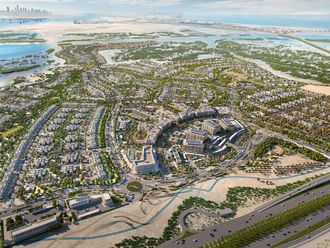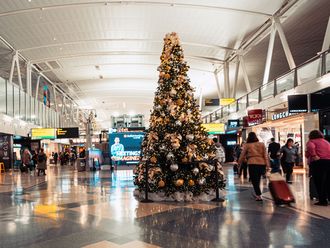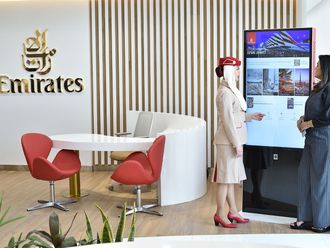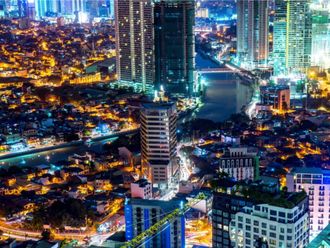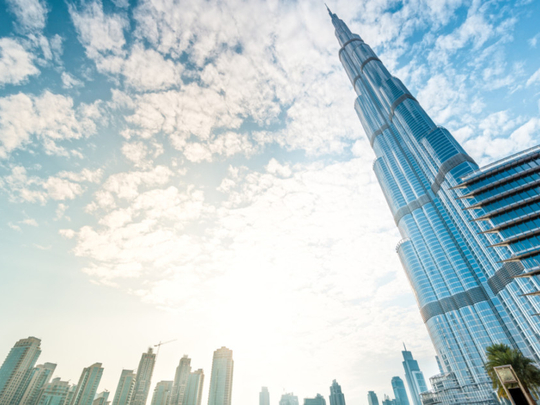
The influence that an iconic project can have on its locale is often quite dramatic. Apart from becoming a magnet for activity and development, trophy properties or iconic projects have the ability to change the value of nearby real estate. In Dubai, dozens of iconic projects in the past years have kept the city in a constant flux, with its ‘city centre’ shifting from Deira in the 1980s, to Bur Dubai, to Dubai Marina and now Downtown Dubai.
“In Dubai, flagship projects appear to create the demand and momentum for the construction of entire districts, in contrast to modern landmarks and recognisable flagships elsewhere, which have been created more organically, often within pre-existing city centres,” David Godchaux, CEO of Core- Savills, tells PW.
Several iconic projects are under way in Dubai, including the World Expo 2020 site, the Dubai Metro extension and Meydan One. Many other developments have been launched with much fanfare and publicity, claiming to become the world’s tallest tower, the highest observation wheel and the most expensive apartment, among others.
“Although this is very rare throughout the world, the closest similar examples are major regeneration projects, such as Greenwich Peninsula in London,” says Godchaux. “Previously a brownfield site, it is now the largest regeneration project in Europe. In Saudi Arabia, Kingdom Tower is currently under construction and other examples include the Pearl in Qatar, Marina Bay Sands in Singapore and the Cinta Costera in Panama City.”
The caveat is that big projects need to be more than just big to make a sizeable difference to the property values in the area. Projects such as the Dubai Opera District, The Tower in Creek Harbour and others also add various lifestyle aspects such as retail and community amenities for both residents and visitors. “They collectively enhance the environment to broaden the offering to the visitors and residents,” Nick Maclean, managing director of CBRE Middle East, tells PW. “That is an important part of making Dubai a complete market for ‘live, work and play’.”
Infrastructure, food and beverage offerings, retail and entertainment come together to create value, but some projects are inherently attractive despite not having trophy additions. Maclean says, “In so far as the [Dubai Water] Canal is concerned, one of the key reasons of its impact is the increase in quantity of waterside apartments and villas. That will almost certainly enhance the value of individual units on either side.”
Projects such as City Walk change the lifestyle in an area, making it more attractive to a demographic other than the ones originally served. “In City Walk, it’s not just enhancing the value of residential property,” says Maclean. “There was significant residential value in Jumeirah already. It is, in fact, creating a new format retail where people can live close by. The residential values are not yet fully realised. Once the retail offering is balanced and stable, we expect it to become interesting to live, shop and be entertained.”
Impact
Godchaux says that while there is an immediate gain in sentiment, actual price enhancements take time. “There has been no immediate spike in prices, but we believe in the short term there will be more of a sentimental boost,” says Godchaux. “Few investors and end users will naturally want to be among the first to invest or live there, like we saw 13 years ago with the launch of Dubai Marina. Over the next few years, with momentum building and more developments delivered in this part of Dubai, we expect to see this market maturing, with prices increasingly anchored on or linked to market fundamentals and driven by offer and demand rather than just sentiment.”
An important addition to the list of iconic projects, according to Maclean, are commercial landmarks. “Landmark schemes in the commercial sphere include the ICD Brookfield Place in Dubai International Financial Centre. That is a real trophy project — very big in scale and most significant to occupiers in the region,” he says. “It is a tempting buy for investors and occupiers.”
Large projects by their sheer scale result in a change in perception about the area. The Dubai Opera District, City Walk and the Dubai Water Canal may affect prices in Downtown, Jumeirah and other nearby areas in the long and short term.
“Over the past two or three years there has been price softening across Dubai in general, but in particular in Downtown and Jumeirah,” says Godchaux. “Excluding the Burj Khalifa, the average price was about Dh2,100 per square foot in Downtown; it is now on average around Dh1,700 per square foot. The new projects coming on board in these areas are building momentum and, once they become more mature, we are very optimistic they will have a positive impact on pricing.
“Where we see a lot of affordable or mid-market stock coming in the outer areas of Dubai, the stock coming in this part of the emirate is more prime and we don’t see an oversupply of this at the moment, which should support price appreciation with the demand naturally increasing as the momentum builds up around the Canal, City Walk and Dubai Opera.”
Dubai has seen examples of large projects, such as the Mall of the Emirates and Dubai Marina, which have had varied impact on property prices in the area. “The mall has enhanced the value in Barsha. However, it is not the most expensive location. The mall is important, but it’s not truly reflected in the value of the properties,” Maclean says. “In Dubai Marina, the property value enhanced because of the facilities around it.”
Citing the upcoming Jumeirah Central, Maclean says projects that are designed holistically have a bigger impact on real estate value. “The concept is designed to attract people to live, work and play. The concept of the scheme is very important,” says Maclean. “The facilities and components do not just enhance but maintain value. Over time the premium for new accommodation goes away. However, if the development is right with all the facilities, it continues to maintain value.”
Enhancing and maintaining value is ultimately a combination of factors, says Godchaux. “The question everywhere always is how much momentum and demand the flagship project – and its resulting surrounding development – will be able to generate and, more importantly, how to carry that demand steadily through the duration of the project,” he says. “Price is an important factor, but infrastructure and reaching the critical size that will give the project credibility are far more essential.
“There are almost no examples of this being accomplished in a short period of time outside Dubai.”




